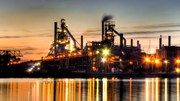
Air pollution from Europe's largest industrial facilities cost society at least €59 billion, and possibly as much as €189 billion in 2012, according to an assessment published today by the European Environment Agency (EEA). Half of these damage costs were caused by just 1 % of the industrial plants.

Protected areas cover more than 1 000 000 km2 of land and more than 340 000 km2 of coastal and marine ecosystems in Europe, according to the latest data. These areas are vitally important for protecting the continent’s most vulnerable species, habitats and marine life.

Air pollution in Europe comes with a high price tag, according to a new report from the European Environment Agency (EEA). While policies have improved air quality overall, air pollution is still the main environmental health hazard, resulting in high costs for health care systems, unhealthy workers and an estimated 400 000 premature deaths in Europe in 2011.

The River Mur flows from Austria, Slovenia, Hungary and Croatia before reaching Drava, a tributary of the Danube. The organisation managing the Mur Basin was awarded the second European River Prize during the 6th European River restoration conference (ERRC) in Vienna yesterday.

Almost all car and van manufacturers have met European carbon dioxide emission limits several years ahead of their deadlines, according to updated information from the European Environment Agency (EEA).

European Union (EU) greenhouse gas emissions fell almost 2 % between 2012 and 2013, putting the EU very close to its 2020 reduction target, according to new analysis from the European Environment Agency (EEA). The EU is also on track to meet two other targets to boost renewable energy and energy efficiency by 2020.

Rivers are home of many thousands of wildlife species, vital arteries for farmland, a source of cooling for industry, flood regulation, navigation channels and source of drinking water, to name just a few important functions. Such multiple demands on water bodies mean that many different groups need to be actively involved in managing a river basin.

From tropical islands to icy tundra, European Union overseas entities are rich in 'natural capital'. Many of these areas have highly productive land and seas, and a huge diversity of ecosystems; collectively they are home to an astounding number of globally significant species.

Production and consumption systems in the European Union have large, global impacts on the environment. More sustainable ways of satisfying our needs are emerging, but they need more support, according to a new assessment.

The European Environment Agency's photography competition 'Environment & Me' has closed. But you can still participate by voting for your favourite pictures.


